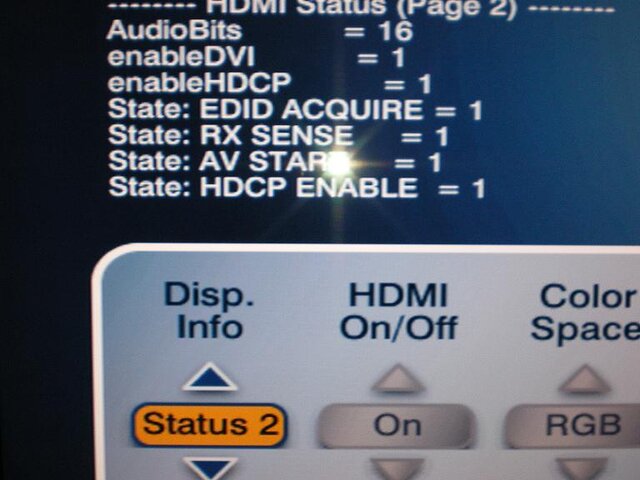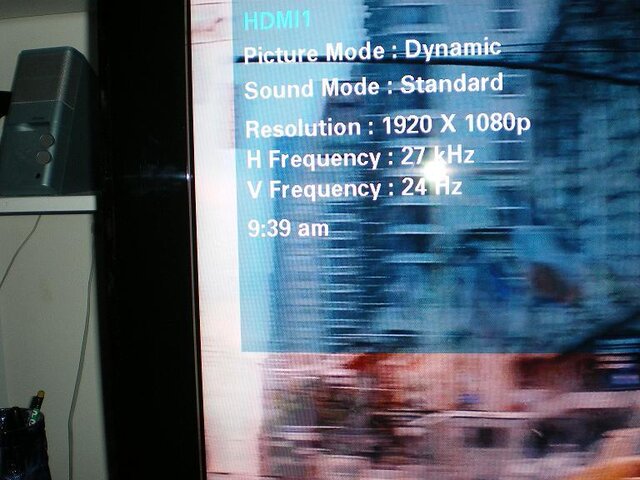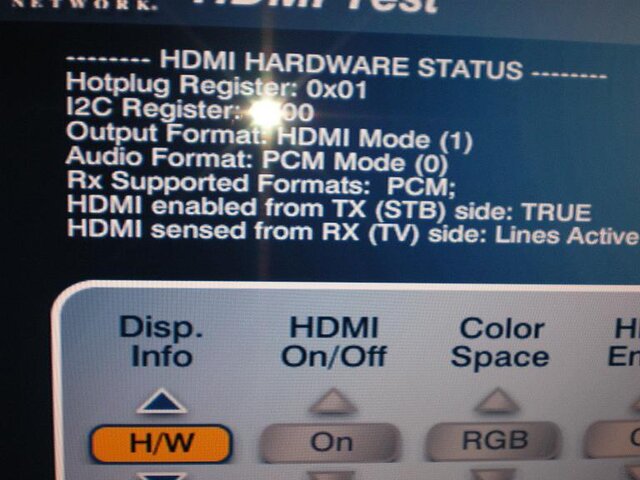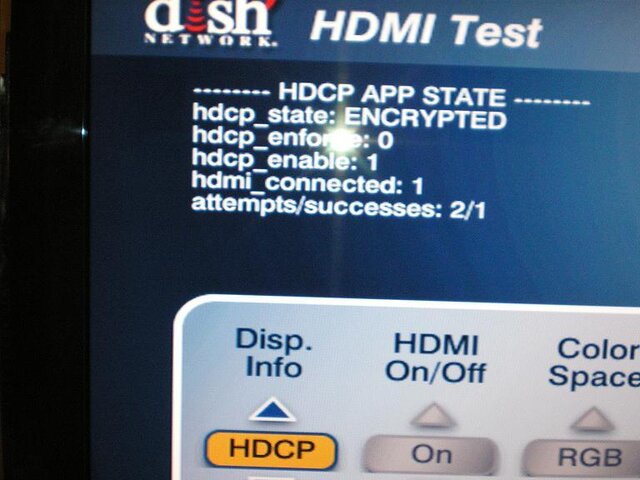Since you are taking the 24p signal and converting to 60p you have lost the benefit of 24p. The only thing you could hope to see is higher resolution and bit rate compared to typical Dish programming.
Actually, I saw it both ways. I can process the inbound signal from Dish and the BluRay Player to the scaler or just pass it through as it comes directly to the Projector. The original 1080p24 was passed directly to the Projector and it looked fine. I also (as in addition to) processed the 24P film from VOD to 60p and did the same with the BluRay player. And, took the trouble to process the film to 1080i. The scaler makes it easy to do this. Only in the 1080i did I see some judder in the right to left action movement while 1080p60 and the pass through at 1080p24 was clean and smooth.
I did take some stills of the full screen and tried my best to get the same frame still from the E*VOD and compare it to the BluRay frame. The obvious difference is the AR being 1.78 :1 for the VOD and 2.4:1 for the BluRay. Many people will bitch about this and you can see the missing picture in the VOD especially on the left side of the screen.
The color between the two was near perfect. There was no noticeable compression artifacts in the image, no mosquito artifacts and the contrast of the image was near identical. No macro blocking at all. General chroma noise is high for this film whether VOD or BluRay compared to many but better than some. I'd say it is about average for chroma noise.
The film uses lots of handheld shaky camera absent the steadycam and also violates the SMPTE spec for 24 FPS horizontal panning but seems to hold on the more critical SMPTE spec for vertical camera movement. These vertical camera movements were more troublesome in the 1080i than the 1080p60 or 24 fps.
The missing scenes I found were indeed on the BluRay version that were optional viewing. The Theatrical version on the BluRay I believe is identical to the VOD version.
Here are two images I caught with my digital still camera off the 92" wide screen shot from viewing distance and zoomed to full frame 1/8 second time exposure.
Edit- I added a third I shot at 4 ft from the screen of just the face shot.










